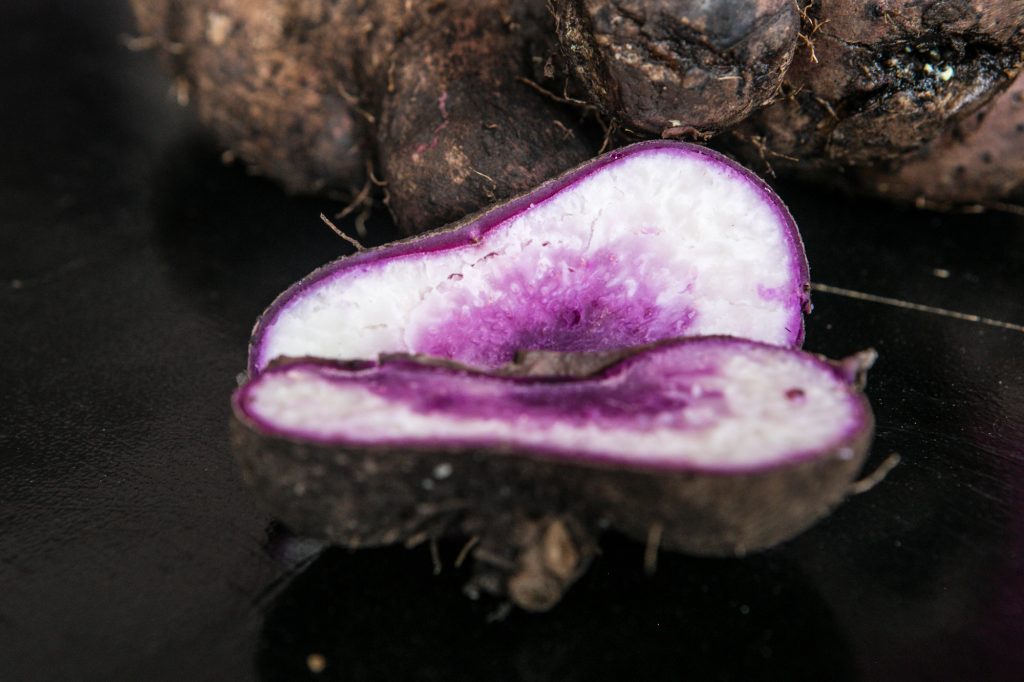The beautiful color of ube reminds me of the sweet deliciousness from delicacies such as ube ice cream, pastries, and jams. But in Bohol it is more than that; it is a sustainable food source. Ube is not just a snack or dessert but also an alternative staple food, boiled or roasted and eaten in place of rice. A large ube root can be stored for up to six months. Underground, it can last almost forever—and even survive typhoons and other calamities—by regenerating itself in any plot of fertile ground.
Ube, or ubi as the people of Bohol call it, is also internationally known as purple yam (Dioscorea alata). A root crop originally native to Southeast Asia, it has since spread all over the world. It is mainly used for food but also has applications in medicine and ornamental design. In the Philippines, it is significant not only in cultural activities but livelihood projects as well. There have been numerous ube exhibits and seminars on how to cultivate and produce various derivatives.
In Bohol, ube is more than just a delicacy; it is a sustainable food source. Ube is not just a snack or dessert but also an alternative staple food, boiled or roasted and eaten in place of rice.
Ube grows abundantly around Bohol and is a major crop in most towns in the island province. The ube is sweet and feisty, like the people of Bohol who celebrate the resiliency of the crop with a yearly festival. According to locals, the crop has sustained them through hundreds of years of calamities and wars; to them it is not just a crop but also a blessing that flourishes on the island.
There are many varieties of ube found in Bohol with only subtle differences in pigmentation and aroma. These include the apali, camote, kabus-ok, iniling, balanghoy, liko, binanag, tam-isan, and kapong-oy. Binugas, also called baligonhon or kinampay, is the local favorite. It may not have the deep purple color associated with ube, but it has the strongest and most fragrant aroma of all the varieties.
The ube is a versatile vegetable that can be used not only in sweet concoctions and savory treats but also as a neutral starch to go with a meal. Even the tender tendrils of the plant can be sautéed into a dish or blanched to make a salad.
Originally published in F&B Report Vol. 13 No. 2


